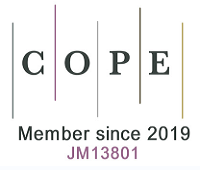Improving HER2 testing reproducibility in HER2-low breast cancer
Abstract
HER2 is a pillar biomarker in breast cancer, and it is assessed by immunohistochemistry (IHC) using a three-tier scoring system and reflex in situ hybridization (ISH) for IHC score 2+. Novel HER2-directed antibody-drug conjugates have demonstrated significant antitumor activity in breast cancers with low levels of HER2 expression, i.e. IHC score 1+ or ISH-negative IHC score 2+. Both primary and acquired resistance to anti-HER2 therapies remains a challenge in the treatment of breast cancers according to the HER2 positivity continuum. Thus, the ability to precisely discriminate among HER2-zero, HER2-low, and HER2-positive breast cancers is no longer a mere academic exercise. HER2 testing criteria, guidelines, and quality controls are re-gaining momentum for this new clinical need. Therefore, all preanalytical and analytical variables that might trouble the sensitivity and reproducibility of this test should be carefully considered to address all possible issues and open all possible therapeutic opportunities for breast cancer patients.
Keywords
INTRODUCTION: THE EXPANDED SPECTRUM OF HER2 POSITIVITY IN BREAST CANCER
HER2 status assessment is considered “the” predictive test in breast cancer pathology because of its extremely relevant prognostic and predictive values[1]. Testing for HER2 consists of immunohistochemistry (IHC) using a three-tier scoring system and in situ hybridization (ISH) in case of IHC score 2+[2]. Using this method, patients with HER2+ breast cancer, i.e. IHC score 3+ or ISH-positive IHC score 2+ are eligible for anti-HER2 targeted therapy[3,4]. Recently, the DESTINY-Breast04 clinical trial demonstrated that targeting HER2 provides significant benefits also for patients with metastatic breast cancer showing low levels of HER2 expression, i.e. IHC score 1+ or ISH-negative IHC score 2+[5]. Of note, patients with hormone receptor (HR)+ disease had to be refractory/resistant to endocrine therapy (ET). In this randomized clinical study, the antibody-drug conjugate (ADC) trastuzumab deruxtecan (T-DXd) improved median progression-free survival by 4.8 months and median overall survival by 6.6 months, compared with standard single-agent chemotherapy. These data establish a new standard of care for patients with HER2-low breast cancer and a fast-track approval for T-DXd is expected. Indeed, these tumors were previously not eligible for HER2 targeting because they were considered resistant to HER2 inhibitor monoclonal antibodies[6]. Due to these groundbreaking advances, the capability to precisely discriminate among HER2-zero, HER2-low, and HER2+ breast cancers is no longer a mere academic exercise for pathologists. Instead, HER2 testing criteria, guidelines, and quality controls are re-gaining momentum to embrace this new upcoming clinical need.
THE EVOLUTION OF HER2 TESTING
Historical perspective
The American Society of Clinical Oncology (ASCO)/College of American Pathologists (CAP) Expert Panel has made remarkable efforts to improve the analytical reliability of HER2 testing. Since 2007, they have provided guidelines on HER2 interpretation in breast cancer, including algorithms for defining positive, equivocal, and negative values for both HER2 protein expression and gene amplification. Specifically, a positive HER2 result was IHC staining of 3+ (i.e., uniform, intense membrane staining of > 30% of invasive tumor cells), a fluorescent ISH (FISH) result > 6 HER2 gene copies per nucleus, or a HER2 gene to chromosome 17 signals ratio > 2.2; a negative result was an IHC staining of 0 or 1+, a FISH result of < 4.0 HER2 gene copies per nucleus, or FISH ratio < 1.8[7]. Subsequently, in 2009, the intra-tumor heterogeneity of HER2 amplification was supplemented to the guideline and defined as HER2/CEP17 signal ratios > 2.2 in 5%-50% of the neoplastic cells[8,9]. Later, in 2013, to avoid false-negative results, the positivity threshold was decreased to 10% and the HER2/CEP17 ratio to 2[10]. With these updates, a considerably higher number of patients could be treated with trastuzumab with a reasonable, slight increase of adverse events. In 2018, ASCO/CAP released an integration to the 2013 edition, emphasized the coordination between IHC and ISH results, and mostly addressed specific clinical questions and technical issues related to HER2 equivocal and heterogeneity[3]. The current IHC algorithm with the expanded spectrum of HER2 reporting category and the reporting results for ISH assays are shown in Tables 1 and 2, respectively (Source: Breast Biomarker Reporting, CAP Cancer Protocol Templates, v1.4.1.1, November 2021 update, available at: https://documents.cap.org/protocols/Breast.Bmk_1.4.1.1.REL_CAPCP.pdf.
Reporting results of HER2 testing by immunohistochemistry and the corresponding expanded spectrum of positivity (ASCO/CAP 2021)
| Score | Membrane staining pattern | Tumor cells | Classical category | Expanded spectrum |
| 3+ | Intense, complete (circumferential) | > 10% | HER2+ | HER2+ |
| 2+ | Weak-to-moderate, complete (circumferential) | > 10% | HER2+ if ISH+ and HER2- if ISH- | HER2+ if ISH+ and HER2-low if ISH- |
| Intense, complete | ≤ 10% | |||
| 1+ | Faint/barely perceptible, incomplete | > 10% | HER2- | HER2-low |
| 0 | Faint/barely perceptible, incomplete | ≤ 10% | HER2- | HER2 ultra low |
| No staining | HER2- | HER2-zero |
Reporting results of HER2 testing by in situ hybridization (ASCO/CAP 2021)
| Result | Assay | Criteria |
| Positive | Single probe | CN ≥ 6.0 CN ≥ 4.0 and CN < 6.0 and IHC = 3+ CN ≥ 4.0 and CN < 6.0 and dual ISH ratio ≥ 2.0 |
| Dual probe | Ratio ≥ 2.0 and CN ≥ 4.0 Ratio ≥ 2.0 and CN < 4.0 and IHC = 3+ Ratio < 2.0 and CN ≥ 6.0 and IHC > 1+ Ratio < 2.0 and 4.0 ≤ CN > 6.0 and IHC = 3+ | |
| Negative | Single probe | CN < 4.0 CN ≥ 4.0 and CN < 6.0 and IHC < 3+ CN ≥ 4.0 and CN < 6.0 and dual ISH ratio < 2.0 and CN < 4.0 |
| Dual probe | Ratio ≥ 2.0 and CN < 4.0 and IHC < 3+ Ratio < 2.0 and CN ≥ 6.0 and IHC < 2+ Ratio < 2.0 and 4.0 ≤ CN > 6.0 and IHC < 3+ Ratio < 2.0 and CN < 4.0 |
The evolution of different ISH types has established a proposal of reliable FISH alternatives with faster performance at a lower cost. Silver in situ hybridization and chromogenic in situ hybridization have demonstrated great reproducibility and have been approved by the U.S. Food and Drug Administration for HER2 testing in breast cancer. The combined technology of dual-color dual-hapten in situ hybridization (D-DISH), providing the convenience of light microscopy with an ISH specificity, using chromogenic probes instead of fluorescent ones, also demonstrates a high reproducibility[11]. Gene protein assays and next-generation sequencing are the newer modalities, which may potentially help to overcome the issue of the tumor heterogeneity, combining the benefits of both IHC and ISH by single-slide HER2 status assessment[12]. Other promising candidates for the alternative HER2 status assessment are molecular (multiplex ligation-dependent probe amplification) and liquid biopsy assays using circulating tumor cells, cell-free tumor DNA (ctDNA), and extracellular vesicles, which have been tested in IHC/ISH HER2-equivocal breast cancers. Transcriptomic analysis has revealed high HER2 mRNA levels in HER2-enriched breast cancer subtypes using the PAM50 probe, suggesting another possible subtype signature. Dual HER2-blockade led to positive results in patients with higher HER2 mRNA levels; thus, it is a newly proposed biomarker for chemotherapy de-escalation[13-15]. Despite evolving modalities of HER2 testing, they are currently awaiting approval and the IHC-ISH approach remains the “gold standard”[16].
HER2 targeting and biomarkers of drug resistance in breast cancer
The canonical HER2+ breast cancers account for 15%-20% of all breast malignancies and are characterized by the overexpression/amplification of HER2[9]. These patients can be treated with a variety of anti-HER2 compounds, including trastuzumab and pertuzumab, in both adjuvant and neoadjuvant settings[17,18]. Regrettably, the development of primary or acquired resistance is not uncommon in these patients[19]. Furthermore, despite the success of ET-combined therapy in the metastatic setting, a substantial proportion of initial responders eventually developing resistance and/or recurrence over the time. In this respect, novel predictive biomarkers are warranted. Several mechanisms have been proposed thus far, including phenotype shift through selective pressure[20-23]. Interestingly, it has been observed that low levels of HER2 expression, both in terms of the percentage of HER2-expressing cells and IHC staining intensity, may impair the binding of traditional anti-HER2 agents to the target[24]. An additional mechanism of resistance is represented by the activation of the phosphatidylinositol-3-kinase (PI3K)/Akt and the mammalian target of rapamycin (PI3K/AKT/mTOR) and cyclin D1-dependent kinase 4/6 (CDK4/6) pathways[25-27]. Finally, genetic alterations in HER2 regions responsible for kinase activation can compromise the ability of anti-HER2 compounds to bind HER2. Specifically, studies have shown that mutations in positions L755S and T798I can cause the highest levels of resistance[28,29]. In this scenario, an appropriate and reproducible HER2 test able to precisely identify the various types of HER2 expression is essential to put in place the most appropriate HER2-targeted treatment combination.
Challenges and barriers for HER2-low identification
The current evidence on HER2-targeting therapies in HER2-low breast cancer arises from several translational research studies employing various classes of monoclonal antibodies, anti-HER2 vaccines, cellular immunotherapy, ADC, and bispecific antibodies[22]. In particular, ADC combines the selectivity of anti-HER2-targeted therapy with the cytotoxic potency of chemotherapy while reducing the systemic exposure to the cytotoxic payload[30-32]. Among this class of drugs, T-DXd is composed of a humanized anti-human HER2 antibody, an enzymatically cleavable peptide-linker, and a proprietary topoisomerase I inhibitor[30]. After the cleavage of the peptide-based linker by lysosomal cathepsins, the released cytotoxic molecules can affect HER2-low cells neighboring those with higher HER2 expression, reflecting a bystander effect; thus, T-DXd has shown the ability to target tumor cells regardless of their HER2-status[33,34]. These findings have transformed the traditional dichotomy of HER2 status and have raised the expectations in this field. However, whether HER2-low breast cancer represents a distinct biologic and prognostic subtype is still a matter of controversy. Recently, an analysis of 5,235 patients with HER2-negative invasive breast cancer revealed that HER2-low expression was positively associated with level of ER expression, and ER-low tumors were enriched among HER2-zero tumors[35]. The Authors of this study suggest that the worse prognosis of ER-low tumors might confound the prognostic analyses of HER2-low expression. Perhaps, re-testing and re-assess HER2 status in these retrospective studies, particularly for HER2-zero tumors would provide additional information. Assessment of data from CAP surveys and from a Yale University-based study of concordance of 18 pathologists reading 170 breast cancer biopsies revealed that the scoring accuracy for HER2 IHC in the low range (0 vs. 1+) was poor[36]. This inaccuracy might lead to misassignment of many patients for treatment with T-DXd. Further development of HER2-low breast cancer treatment includes combined treatment strategies evaluation, where high expectations rely on the ADC and immune checkpoint inhibitor combination[37].
Reducing false-negative and false-“low-positive” results
It has been reported that up to 55% of patients with breast cancer have a HER2-low disease[38-41]. However, up to now, discriminating between IHC score 0 with incomplete and faint staining in ≤ 10% of tumor cells and score 1+, as well as between score 1+ with faint staining and score 2+ with weak-to-moderate staining intensity, was a negligible pathology exercise[42,43]. In this context, updated guidelines for all the analytical phases are necessary to improve our diagnostic sensitivity for HER2-low breast cancer[43]. Although the ASCO/CAP continuously updates the guidelines to ensure optimal diagnostic performance, the interpretation of HER2 IHC in HER2-low breast cancer has not yet been formally endorsed[44]. Accurate and reproducible testing strategies and techniques are the key aspects to identifying patients who may benefit from ADC[43]. In this regard, to prevent false-negative/positive results and subsequent mistreatment, careful supervision of preanalytical and analytical issues is required[44]. A range of preanalytical factors such as fixation, antigen retrieval, antibody clones, enzymatic activity, reaction time, temperature, and substrate concentration may influence HER2 staining intensity[45,46]. Staining methodology, particularly antigen retrieval, the availability of diverse antibody clones with various specificity [i.e., PATHWAY® HER2 (clone 4B5; Ventana Medical Systems Inc., Tucson, AZ, USA), HercepTest™ (Dako Denmark A/S, Glostrup, Denmark), and Oracle® HER2 (clone CB11; Leica Microsystems GmbH, Wetzlar, Germany)] may significantly impact the accuracy and reproducibility of results and complicate the identification of HER2-low expression in terms of false-positive and false-negative results[46,47]. Test repetition for equivocal results may exclude possible technical problems; however, it does not often result in definitive positive or negative results. Regarding the post-analytical phase, the lack of consistent epithelial internal positive control for HER2 within non-neoplastic breast tissue, HER2 intratumoral heterogeneity, particularly in HER2-low breast cancer, and the semi-quantitative and subjective mode of HER2 assessment may lead to inter-observer variability affecting the accuracy of the results[44,48,49]. A larger number of patients with HER2+ metastatic breast cancer might possibly have a long-lasting clinical response with the careful application of mor precise and reproducible diagnostic methods[50]. Thus, rigorous quality control procedures for specimen preparation coupled with well-defined guidelines for the precise assessment of HER2-low cases are required[51,52].
CONCLUSION
In light of the therapeutic armamentarium broadening based on HER2 patterns of expression, HER2 testing is becoming more complex. To improve sensitivity, specificity, and reproducibility of HER2 status evaluation, pathologists need to be aware of the molecular mechanisms underlying the variable expression of HER2 in different types of breast cancers and even in different cells within the same tumor. In this respect, continuous education, update, quality controls, and multidisciplinary discussions are key elements for optimal patient management.
DECLARATIONS
Authors’ contributionsWrote the initial version of the manuscript: Sajjadi E
Manuscript initially revised: Venetis K
Supervised and revised the paper and prepared the tables: Fusco N, Sajjadi E, Ivanova M
Availability of data and materialsNot applicable.
Financial support and sponsorshipNot applicable.
Conflicts of interestFusco N has received honoraria for consulting/advisory role/speaker bureau from Novartis, Merck Sharp & Dohme (MSD), Boehringer Ingelheim, AstraZeneca, and Daiichi-Sankyo.
Ethical approval and consent to participateNot applicable.
Consent for publicationNot applicable.
Copyright© The Author(s) 2022.
REFERENCES
1. Venetis K, Crimini E, Sajjadi E, et al. HER2 low, ultra-low, and novel complementary biomarkers: expanding the spectrum of HER2 positivity in breast cancer. Front Mol Biosci 2022;9:834651.
2. Wolff AC, Hammond ME, Hicks DG, et al. American Society of Clinical Oncology. College of American Pathologists. Recommendations for human epidermal growth factor receptor 2 testing in breast cancer: American Society of Clinical Oncology/College of American Pathologists clinical practice guideline update. Arch Pathol Lab Med 2014;138:241-56.
3. Wolff AC, Hammond MEH, Allison KH, et al. Human epidermal growth factor receptor 2 testing in breast cancer: American Society of Clinical Oncology/College of American Pathologists Clinical practice guideline focused update. J Clin Oncol 2018;36:2105-22.
4. Pondé N, Brandão M, El-Hachem G, Werbrouck E, Piccart M. Treatment of advanced HER2-positive breast cancer: 2018 and beyond. Cancer Treat Rev 2018;67:10-20.
5. Modi S, Jacot W, Yamashita T, et al. Trastuzumab deruxtecan in previously treated HER2-low advanced breast cancer. N Engl J Med 2022;387:9-20.
6. Hamilton E, Shastry M, Shiller SM, Ren R. Targeting HER2 heterogeneity in breast cancer. Cancer Treat Rev 2021;100:102286.
7. Wolff AC, Hammond ME, Schwartz JN, et al. American Society of Clinical Oncology. College of American Pathologists. American Society of Clinical Oncology/College of American Pathologists guideline recommendations for human epidermal growth factor receptor 2 testing in breast cancer. J Clin Oncol 2007;25:118-45.
8. Vance GH, Barry TS, Bloom KJ, et al. College of American Pathologists. Genetic heterogeneity in HER2 testing in breast cancer: panel summary and guidelines. Arch Pathol Lab Med 2009;133:611-2.
9. Ahn S, Woo JW, Lee K, Park SY. HER2 status in breast cancer: changes in guidelines and complicating factors for interpretation. J Pathol Transl Med 2020;54:34-44.
10. Wolff AC, Hammond ME, Hicks DG, et al. American Society of Clinical Oncology. College of American Pathologists. Recommendations for human epidermal growth factor receptor 2 testing in breast cancer: American Society of Clinical Oncology/College of American Pathologists clinical practice guideline update. J Clin Oncol 2013;31:3997-4013.
11. Gajaria PK, Tambe S, Pai T, Patil A, Desai SB, Shet TM. Dual-color dual-hapten in situ hybridization (D-DISH) - comparison with fluorescence in situ hybridization (FISH) for HER2/neu testing in breast cancer. Indian J Pathol Microbiol 2020;63:194-9.
12. Sandén E, Khazaei S, Tryggvadottir H, et al. Re-evaluation of HER2 status in 606 breast cancers-gene protein assay on tissue microarrays versus routine pathological assessment. Virchows Arch 2020;477:317-20.
13. Marchiò C, Annaratone L, Marques A, Casorzo L, Berrino E, Sapino A. Evolving concepts in HER2 evaluation in breast cancer: heterogeneity, HER2-low carcinomas and beyond. Semin Cancer Biol 2021;72:123-35.
14. Ercolani C, Marchiò C, Di Benedetto A, et al. Breast carcinomas with low amplified/equivocal HER2 by Ish: potential supporting role of multiplex ligation-dependent probe amplification. J Exp Clin Cancer Res 2017;36:143.
15. Picornell AC, Echavarria I, Alvarez E, et al. Breast cancer PAM50 signature: correlation and concordance between RNA-Seq and digital multiplexed gene expression technologies in a triple negative breast cancer series. BMC Genomics 2019;20:452.
17. Dai WF, Beca JM, Nagamuthu C, et al. Cost-effectiveness analysis of pertuzumab with trastuzumab in patients with metastatic breast cancer. JAMA Oncol 2022;8:597-606.
18. Viale G, Fusco N. Pathology after neoadjuvant treatment - how to assess residual disease. Breast 2022;62 Suppl 1:S25-8.
19. Exman P, Tolaney SM. HER2-positive metastatic breast cancer: a comprehensive review. Clin Adv Hematol Oncol 2021;19:40-50.
20. Vernieri C, Milano M, Brambilla M, et al. Resistance mechanisms to anti-HER2 therapies in HER2-positive breast cancer: current knowledge, new research directions and therapeutic perspectives. Crit Rev Oncol Hematol 2019;139:53-66.
21. Zhang Y. The root cause of drug resistance in HER2-positive breast cancer and the therapeutic approaches to overcoming the resistance. Pharmacol Ther 2021;218:107677.
22. Venetis K, Invernizzi M, Sajjadi E, Curigliano G, Fusco N. Cellular immunotherapy in breast cancer: the quest for consistent biomarkers. Cancer Treat Rev 2020;90:102089.
23. Corti C, Venetis K, Sajjadi E, Zattoni L, Curigliano G, Fusco N. CAR-T cell therapy for triple-negative breast cancer and other solid tumors: preclinical and clinical progress. Expert Opin Investig Drugs 2022;31:593-605.
24. Hou Y, Nitta H, Wei L, et al. HER2 intratumoral heterogeneity is independently associated with incomplete response to anti-HER2 neoadjuvant chemotherapy in HER2-positive breast carcinoma. Breast Cancer Res Treat 2017;166:447-57.
25. Chandarlapaty S, Sakr RA, Giri D, et al. Frequent mutational activation of the PI3K-AKT pathway in trastuzumab-resistant breast cancer. Clin Cancer Res 2012;18:6784-91.
26. Goel S, Wang Q, Watt AC, et al. Overcoming therapeutic resistance in HER2-positive breast cancers with CDK4/6 inhibitors. Cancer Cell 2016;29:255-69.
27. Fusco N, Malapelle U, Fassan M, et al. PIK3CA mutations as a molecular target for hormone receptor-positive, HER2-negative metastatic breast cancer. Front Oncol 2021;11:644737.
28. Trowe T, Boukouvala S, Calkins K, et al. EXEL-7647 inhibits mutant forms of ErbB2 associated with lapatinib resistance and neoplastic transformation. Clin Cancer Res 2008;14:2465-75.
29. Rexer BN, Ghosh R, Narasanna A, et al. Human breast cancer cells harboring a gatekeeper T798M mutation in HER2 overexpress EGFR ligands and are sensitive to dual inhibition of EGFR and HER2. Clin Cancer Res 2013;19:5390-401.
30. Indini A, Rijavec E, Grossi F. Trastuzumab deruxtecan: changing the destiny of HER2 expressing solid tumors. Int J Mol Sci 2021;22:4774.
31. Diamantis N, Banerji U. Antibody-drug conjugates-an emerging class of cancer treatment. Br J Cancer 2016;114:362-7.
33. Modi S, Park H, Murthy RK, et al. Antitumor activity and safety of trastuzumab deruxtecan in patients with HER2-low-expressing advanced breast cancer: results from a phase Ib study. J Clin Oncol 2020;38:1887-96.
35. Tarantino P, Jin Q, Tayob N, et al. Prognostic and biologic significance of ERBB2-low expression in early-stage breast cancer. JAMA Oncol 2022;8:1177-83.
36. Fernandez AI, Liu M, Bellizzi A, et al. Examination of low ERBB2 protein expression in breast cancer tissue. JAMA Oncol 2022;8:1-4.
37. Eiger D, Agostinetto E, Saúde-Conde R, de Azambuja E. The exciting new field of HER2-low breast cancer treatment. Cancers (Basel) 2021;13:1015.
38. Banerji U, van Herpen CML, Saura C, et al. Trastuzumab duocarmazine in locally advanced and metastatic solid tumours and HER2-expressing breast cancer: a phase 1 dose-escalation and dose-expansion study. Lancet Oncol 2019;20:1124-35.
39. Iwata H, Tamura K, Doi T, et al. Trastuzumab deruxtecan (DS-8201a) in subjects with HER2-expressing solid tumors: long-term results of a large phase 1 study with multiple expansion cohorts. JCO 2018;36:2501-2501.
40. Schettini F, Chic N, Brasó-Maristany F, et al. Clinical, pathological, and PAM50 gene expression features of HER2-low breast cancer. NPJ Breast Cancer 2021;7:1.
41. Tarantino P, Hamilton E, Tolaney SM, et al. HER2-low breast cancer: pathological and clinical landscape. J Clin Oncol 2020;38:1951-62.
42. Denkert C, Seither F, Schneeweiss A, et al. Clinical and molecular characteristics of HER2-low-positive breast cancer: pooled analysis of individual patient data from four prospective, neoadjuvant clinical trials. Lancet Oncol 2021;22:1151-61.
43. Fusco N, Ragazzi M, Sajjadi E, et al. Assessment of estrogen receptor low positive status in breast cancer: implications for pathologists and oncologists. Histol Histopathol 2021;36:1235-45.
44. Zhang H, Moisini I, Ajabnoor RM, Turner BM, Hicks DG. Applying the new guidelines of HER2 testing in breast cancer. Curr Oncol Rep 2020;22:51.
45. Sapino A, Goia M, Recupero D, Marchiò C. Current challenges for HER2 testing in diagnostic pathology: state of the art and controversial issues. Front Oncol 2013;3:129.
46. Zhang H, Katerji H, Turner BM, Hicks DG. HER2-low breast cancers. Am J Clin Pathol 2022;157:328-36.
47. Schrohl AS, Pedersen HC, Jensen SS, Nielsen SL, Brünner N. Human epidermal growth factor receptor 2 (HER2) immunoreactivity: specificity of three pharmacodiagnostic antibodies. Histopathology 2011;59:975-83.
48. Bianchi S, Caini S, Paglierani M, et al. Tuscany Breast Cancer Study Group. Accuracy and reproducibility of HER2 status in breast cancer using immunohistochemistry: a quality control study in tuscany evaluating the impact of updated 2013 ASCO/CAP recommendations. Pathol Oncol Res 2015;21:477-85.
49. Jensen SG, Thomas PE, Christensen IJ, Balslev E, Hansen A, Høgdall E. Evaluation of analytical accuracy of HER2 status in patients with breast cancer: comparison of HER2 GPA with HER2 IHC and HER2 FISH. APMIS 2020;128:573-82.
50. Tarantino P, Curigliano G, Parsons HA, et al. Aiming at a tailored cure for ERBB2-positive metastatic breast cancer: a review. JAMA Oncol 2022;8:629-35.
51. Angerilli V, Galuppini F, Pagni F, Fusco N, Malapelle U, Fassan M. The role of the pathologist in the next-generation era of tumor molecular characterization. Diagnostics (Basel) 2021;11:339.
Cite This Article
Export citation file: BibTeX | RIS
OAE Style
Sajjadi E, Venetis K, Ivanova M, Fusco N. Improving HER2 testing reproducibility in HER2-low breast cancer. Cancer Drug Resist 2022;5:882-8. http://dx.doi.org/10.20517/cdr.2022.29
AMA Style
Sajjadi E, Venetis K, Ivanova M, Fusco N. Improving HER2 testing reproducibility in HER2-low breast cancer. Cancer Drug Resistance. 2022; 5(4): 882-8. http://dx.doi.org/10.20517/cdr.2022.29
Chicago/Turabian Style
Sajjadi, Elham, Konstantinos Venetis, Mariia Ivanova, Nicola Fusco. 2022. "Improving HER2 testing reproducibility in HER2-low breast cancer" Cancer Drug Resistance. 5, no.4: 882-8. http://dx.doi.org/10.20517/cdr.2022.29
ACS Style
Sajjadi, E.; Venetis K.; Ivanova M.; Fusco N. Improving HER2 testing reproducibility in HER2-low breast cancer. Cancer Drug Resist. 2022, 5, 882-8. http://dx.doi.org/10.20517/cdr.2022.29
About This Article
Special Issue
Copyright
Data & Comments
Data
 Cite This Article 28 clicks
Cite This Article 28 clicks














Comments
Comments must be written in English. Spam, offensive content, impersonation, and private information will not be permitted. If any comment is reported and identified as inappropriate content by OAE staff, the comment will be removed without notice. If you have any queries or need any help, please contact us at support@oaepublish.com.